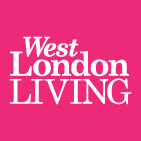Money flows differently on these streets. Locals know where to slip into a barbershop that feels private, where to hit a sleek café after hours, or where an online game cuts through the night with the same edge as a live table.
There’s a snap to the hours here—bookings made on instinct, backstreets humming with energy, and games that pull you so deep the clock just drops away.
Chasing the Hit
Flash sales come out of nowhere, and jackpot reels online keep attracting players with their mix of stacked prizes, bonus triggers, and that one-spin payoff everyone quietly hopes for. It’s the same draw—the mix of timing and surprise—that runs through these digital escapes, whether it is a deal that lands better than expected or a game that shifts the night’s pace in seconds.
That spark moves ahead, brushing past corners where eyes catch and the next play teases.
Everyday Treats That Don’t Break the Bank
Londoners have been doubling down on convenience with a personal edge. The UK food delivery market is heading past £14 billion this year, with a strong push coming straight from the capital. Late-night bao, flat whites delivered to the door, or even a last-minute massage booking have become part of the local pulse, filling gaps when the day runs long.
This year alone, home workouts have seen over 20% growth as people reshape their approach. Nationwide, more than half of adults now pair digital exercise with gym visits, letting people stay in sync, no matter how the hours twist.
Digital Retreats That Actually Matter
Global app downloads recently hit 138 billion, with projections climbing to 299 billion by 2028 as fitness, mental health, and mindfulness tools keep pulling into everyday life. App‑based workouts, guided meditation, and bite‑sized classes have moved from fringe habits to daily anchors.
The explosion in app usage drives more than distraction: mobile games alone accounted for over $81 billion in consumer spending last year, while total app revenue reached nearly $150 billion globally. These figures prove apps don’t just fill idle minutes—they actively shape how urbanites unwind, focus, and reset.
In West London, that translates to ending the night with a slow breathing exercise, shaking off the day without stepping outside.
The Subscription Flow Shaping City Living
Across the city, the rise of subscriptions has changed how people plan their days and spend their money. Over 70% of UK households now pay for at least one subscription, covering streaming, podcasts, meal kits, and niche wellness services.
Among these, meal-kit providers like Gousto and HelloFresh have seen over 35% growth this year, as more people look for practical ways to ease the evening rush without sacrificing choice or quality.
For many, it is no longer about owning more but about refining routines—removing friction while adding touches that feel personal. Instead of stocking up on pantry items or chasing last-minute bookings, people line up small moments of satisfaction across the week, whether that means discovering new recipes, receiving curated coffee drops, or streaming a live Pilates class at home.
These habits have gradually changed spending habits, turning small indulgences into familiar rhythms, slipping into the city’s pulse from morning to late.
Sustainability Woven Into the Everyday
Choices around sustainability are showing up in ways that feel part of daily life, not as statements or trends. Recent reports highlight that nearly half of UK urban consumers now pick eco-certified products when they have the choice, whether in the form of refillable skincare, biodegradable cleaning goods, or cafés offering compostable packaging without fuss.
Small local shops have reported a surge—refill stations, for example, have seen usage rise by 50% over the past year, giving people more ways to make practical, repeatable decisions that match their values.
Demand for this kind of work has picked up, not as part of a trend but as a way to hold onto pieces with personal or practical value. It is a slower approach to consumption, where attention shifts from getting more to keeping what matters in better condition.
Wellness Finds Its Own Space in the City
City life has opened up new kinds of wellness, built around purpose rather than appearance. Recent national figures show wellness-focused experiences—from local getaways to short-form treatments—have climbed by over 18% this year, with more people booking not for image but for the reset they want at day’s end.
Demand has surged at city spas offering deep-tissue treatments, sound therapies, and sauna sessions, while smaller fitness studios are filling up thanks to their focus on recovery, guided sessions, and limited class sizes.
It works as a carve-out of time that restores without leaving daily life. Businesses have adapted by offering options that fit into an afternoon or evening, whether someone heads in for breathwork, a cold plunge, or a mobility tune-up.
Together, these patterns set the tone: delivering moments that steady them, sharpen focus, and carry them straight back into the city’s sharp rhythm.








